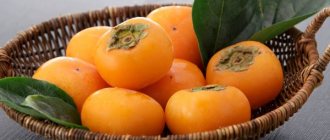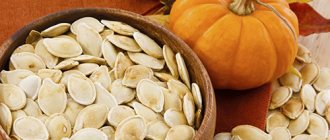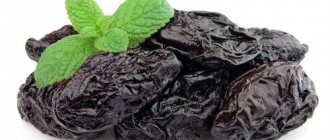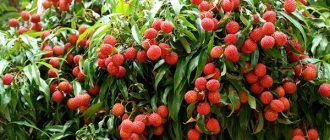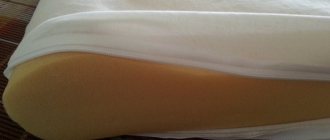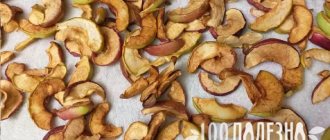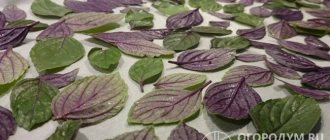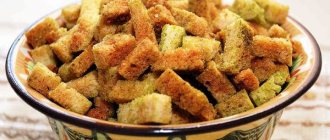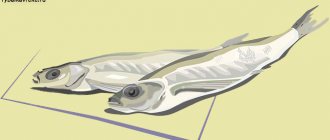Prunes are a healthy product, on the basis of which dozens of types of recipes have been created for every taste. Such dried fruits are not cheap, and it is not always possible to understand how the product was processed.
It is best to make the preparations yourself, using various drying methods. It is necessary to know the conditions and shelf life of dried plums made with your own hands.
I have already told you how to dry apples and pears, today I will share ways to dry plums.
If you have a lot of fruits, I suggest drying them, there are different drying methods, so choose the one that suits you best.
How to dry plums in an electric dryer: with and without seeds
Prunes can be either pitted or pitted, it all depends on the original size of the plum . If the fruit is large, then it is advisable to cut it in half and remove the pit - this way you will speed up the drying process and eliminate the possibility of fruit rotting.
For drying, select whole, unrotten plums.
The drying process for yellow and black plums is the same and consists of the following steps:
- Wash and remove the stem from the plum, select rotten or damaged fruits
- For better storage, it is necessary to blanch whole fruits; to do this, add 1 tablespoon of soda to hot water and bring to a boil.
- Dip the plums in a soda solution for 5 seconds and immediately wash in cold water
You can perfectly dry plums in an electric dryer and get delicious prunes
- For convenience, place pitted and pitted plums on different trays or even divide these fruits into different batches
- Place pitted plums with the cut side up
- Drying plums takes place in three stages, first the temperature in the electric dryer should be no more than 40 C, dry the plums for 6 hours, then leave them to cool for 6 hours
- In the next stage, the temperature should be raised to 60 C, the time is the same as in the previous stage
- Finally, set the temperature to 80 C , the time remains unchanged
Whole fruits should be blanched , as this causes cracks to appear in the skin of the plum through which moisture escapes; cut plums release liquid through the cuts.
The finished prunes will be firm , elastic and evenly dried. Be sure to check that no juice is leaking out of it. Prunes are a unique dried fruit that can pleasantly complement a meat, fish dish, porridge or dessert.
How to prepare fruits for drying
Before drying, plums can be stored for no more than 3 days. Then you need to start preparing for drying:
- First, wash the fruits.
- Select specimens that are unsuitable for drying.
- Let the plums dry. If necessary, wipe them with napkins.
- Boil the plums in syrup so that the pulp has a pleasant consistency and strong aroma.
- Before drying, blanch the plums.
What is fruit blanching and why is it needed?
Blanching is the treatment of plums with boiling water or steam. This eliminates excess air from the fruit. At the same time, the fruits will retain all their nutritional properties.
To process plums you need:
- Fill a deep container with water, boil and reduce heat.
- Pour water with soda dissolved in it in a ratio of 100 to 1 into the second container.
- Blanch the fruits in parts. First immerse in the first container for a maximum of 10 minutes. Then for 10 seconds - into the second container. The solution will remove the waxy coating from the fruit. Then rinse the fruits again to completely remove the soda.
How to dry plums in the oven?
When the calendar says mid-August and the tree has branches full of plums, it’s time to cook prunes. One of the simplest ways is to dry plums in the oven:
- Wash and remove the stem from the plum, select spoiled fruits
- Blanch the fruit in a mixture of water and baking soda for 30 seconds.
- Spread the parchment on a baking sheet and place the plums on it, place the cut fruits with the cuts facing up
To dry prunes perfectly, you need to alternate the time in the oven and the cooling time
- First, dry the plum for 3-4 hours , allow twice as much time for cooling
- At the next stage, increase the temperature to 80°C , set the cooking time to 6 hours , the dried plums need to cool for 3 hours
- Finally, dry the almost finished prunes for 30 minutes 100°C, after which you will see that the skin of the fruit will begin to shine
- Store prepared prunes in a container with a tight-fitting lid.
You shouldn’t waste time preparing prunes, because the resulting taste of the product will definitely delight you, and dishes prepared with dried fruits will remain in the memory of all guests
Storage Features
Housewives use different ways to store dried crops. The most popular are containers (plastic, glass, metal) with sealed lids. You can also use canvas bags, wooden boxes or paper bags.
In a tightly closed container
Containers with tight-fitting lids allow you to store dried fruits for 5-6 months. Manufacturers offer containers made of glass, ceramics, and metal. The containers are first treated with boiling water and thoroughly dried.
The jars are placed in a dry, cool and dark place. You can take it out onto the balcony or put it in a closet in the kitchen (away from radiators and the stove). Periodically, the containers are opened and the fruits are sorted. If condensation appears on the walls of the container, the drains are additionally dried.
In fabric bags
To preserve dried fruits in fabric bags, moths, cockroaches, and ants should not be allowed to appear. The containers are pre-treated - the bags are soaked in a concentrated saline solution. Then the bags are taken out, squeezed out thoroughly and left to dry.
The advantages of containers are that dried fruits “breathe” and do not become moldy, retaining their beneficial qualities. Disadvantage - prunes should not be placed near products with a strong odor (spices, coffee, tobacco).
In wooden boxes
The container is great for storing large quantities of dried fruits. The containers are placed in a dry and dark ventilated place. A wooden box provides ventilation for the product, but the prunes are still periodically sorted and damaged ones are discarded. You can cover the container with a dry, clean cloth.
How to dry yellow plum in the sun?
The most natural way to obtain prunes is sun drying . In the private sector, this is an excellent option to get a quality product without putting in much effort and expense. You can get delicious prunes from both yellow and black plums.
Yellow honey plums are also used to make prunes
The yellow plum is called honey plum, which clearly indicates its sweet and delicate taste.
To dry yellow plums, you will need a wooden pallet or cardboard sheet, and follow these tips:
- Wash the plum, remove the stem, select crumpled and rotten fruits
- whole plums for drying in the sun , as the fruits may not dry well enough, which will negatively affect the storage of the product
- side up on a cardboard or tray and place in a sunny place
- At night or if rain is expected, bring the plums indoors so that the fruits do not become damp.
To dry in the sun, it is better to cut the plums in half.
- Turn the fruit over periodically to ensure the drying process is complete and even.
- The plums will dry in the sun for about a week, to understand that the prunes are ready, squeeze one of the fruits, it should be elastic, not sticky, and not release juice when pressed
Store dried fruits in fabric bags or wooden boxes. Although this method is quite long, it does not require any financial expenses from you; good weather and the absence of persistent insects are required. To prevent dried fruits from being attacked by flies and bees, cover them with gauze.
Preparing plums - important rules
To ensure that the result exceeds all expectations, you must take into account the following recommendations:
- Use only the type of plum that is suitable for drying;
- Choose only high-quality and ripe raw materials;
- A mandatory step is blanching, which must be performed at the initial stages of preparation;
- Maintain temperature conditions during cooking in different devices;
- Periodically change sides of the fruit while drying in the sun.
Ready prunes should not be kept near sources of strong odors, as they can quickly absorb all odors.
Before starting drying you must:
1. Sort the fruits, get rid of rotten and damaged ones.
2. Rinse the product under running water and remove dust.
3. If necessary, remove the seeds.
4. Treat plums with soda solution at the rate of 5 g of soda per 1 liter.
5. Remove the fruits and rinse.
6. Dry off excess moisture with a paper towel.
How to dry pitted prunes?
As is already known, plums can be dried with or without pits. Now you will learn how to get delicious prunes from pitted plums:
- Wash the plums and halve them, remove the pit
- In a saucepan, prepare a mixture of water and citric acid in a ratio of 1:50 , cook the solution until it boils
- Place the plums in a colander or deep-frying basket and lower them into the solution for 40 seconds , this is a kind of blanching - citric acid will give the prunes additional softness and tenderness
For making prunes, plums with or without pits, whole or halved, are suitable.
- Another option for drying plums is a drying cabinet, place the fruits on the tray of the drying cabinet with the cuts facing up and set the temperature to 40°C , dry for 5 hours , after which the fruits need to be cooled for the same time
- Turn the plums cut side down and dry for another 5 hours , the temperature must be increased to 70°C , cool again for 5 hours
- For the third time, the prunes should be left for 8 hours at a temperature of 40°C , during which time they should be thoroughly dried
- Once cooled, place dried fruit in an airtight container and store in a cool place
Using this method, seedless prunes are elastic and moderately dried. From 1 kg of fresh plums you will get 0.3 kg of prunes.
Use of dried fruits
It is best to eat prunes without additional processing, replacing them with unhealthy snacks. For those who are watching their figure, but are used to chewing something tasty while watching their favorite films, this option is simply a salvation! Mothers with a sweet tooth will also appreciate dried plums, as they can easily replace candy.
Prunes are used not only in making desserts and baked goods. It is the main ingredient in the recipes of many salads, meat and vegetarian dishes.
The gorgeous sour-sweet taste of baked duck with prunes will definitely not leave anyone indifferent
Dried fruits are indispensable in preparing fresh compotes and other drinks in the winter. Usually plums are combined with various berries and fruits (dried or frozen). Those who like sour things add gooseberries, cherries, and currants. Those who prefer a milder taste use apples, pears, apricots, peaches, and raspberries. By changing the ingredients and their proportions, you can get a completely new result each time.
How to dry plums in the microwave?
One of the fastest ways to obtain prunes is to use a microwave. Thanks to electromagnetic radiation, the plums are dried evenly, while the beneficial properties in the prunes remain the same.
You can also dry prunes in the microwave.
Prepare plums as follows:
- Wash the plums, dry them on a towel and place them on a microwaveable dish.
- Set the timer for 30 seconds and set the power to 250 W
- Constantly check the readiness of the prunes; it will take you no more than 3-5 minutes
- Do not increase the power too much, as the drain may turn to embers in a matter of seconds.
- Place dried fruits on paper and let cool
Plums can be packaged for storage or consumed daily. Eating dried fruits in the morning will improve the functioning of the gastrointestinal tract and cleanse the body.
How to tell if dried fruit is ready
To find out if prunes are ready, pay attention to their appearance and condition. The main indicators that the fruits have dried properly:
- they are soft, but not wet;
- resilient, elastic;
- do not stick to hands;
- the skin does not crack when bent.
Properly prepared prunes are shiny, elastic and do not crack.
It happens that plums dry unevenly. Don't worry, there is a way to fix this. Place the prunes in liter glass jars, close tightly with plastic lids and leave for several days. From time to time, shake the contents of the jars and watch for the formation of condensation on the walls: as long as there is condensation, you should continue drying the prunes. During this time, overdried fruits will absorb excess moisture from those that have not dried.
How to dry plums in an air fryer?
Using an air fryer you can also cook sweet and tasty prunes. Thanks to the functions of the device, you will receive real dried fruit with a pleasant “smoked” aroma. Unfortunately, the finished product yields very little - with 1 kg of prunes you will get 0.2 kg of prunes.
In an air fryer, prunes will acquire not only the desired shape and taste, but also a pleasant aroma
Remember when cooking prunes in an air fryer:
- Wash the plum, remove the stem and crushed fruits
- You can use fruits with pits; even large fruits will dry well in an air fryer, but if you want to get a product without pits, remove it
- Set the air fryer temperature to 65 °C and dry the plums for 40 minutes , leave to cool for an hour
- Repeat the previous step twice and leave the plums until the next day.
- The next day, dry the plums three times for 40 minutes , cooling time between passes is 60 minutes.
- Place the prunes on paper and leave until the next day.
In dried form, plums will last much longer than in the form of jam.
- Place the cooled dried fruits in a bag or other container; prunes can be stored for up to 2 years.
Prunes are very useful for intestinal problems ; they help to delicately cleanse the body and also get rid of those annoying extra pounds.
Prunes will add a piquant taste to meat, pilaf and dessert, so if you have the opportunity to prepare dried plums for the winter, be sure to take advantage of it. This dried fruit will be many times tastier than a store-bought product.
The benefits of prunes
Dried fruits - raisins, dried apricots, prunes, figs - were a favorite delicacy in winter. They are a source of vitamins and mineral salts. Dried fruits improve immunity and help fight viruses and bacteria.
Prunes are known for their positive effects on the digestive system. After eating, prunes, rich in dietary fiber, remove toxins and cleanse the intestines of old fecal debris.
Prunes are recommended for obesity and cardiovascular disorders. Dried plums, despite their sweet taste, do not increase blood sugar. For this reason, it can be recommended for patients with diabetes. The ability of plums to lower cholesterol levels in the blood has been noted.
There are a large number of antioxidants that bind free radicals. This prevents early aging and the possibility of developing cancer. Plums are good for brain cells and increase learning ability. Prevents the development of Parkinson's or Alzheimer's disease.
Plums are known to improve bone health. This can be very important for people with osteoporosis. The high content of minerals strengthens the skeletal system. Most often, osteoporosis occurs in women over 50 years of age, caused by hormonal imbalance.
Useful properties and contraindications of dried prunes
Dried plums are rich in vitamins E, PP, B2, C. Fruits are valued for their high content of phosphorus, iron, and magnesium. Potassium and calcium are present. Contains 9 important amino acids. Tryptophan occupies a special place. Without this substance, the “happiness hormone” serotonin is not produced.
Other beneficial properties of prunes:
- eliminates constipation, cleanses the intestines;
- reduces blood pressure;
- regulates water-salt balance;
- increases hemoglobin levels, helps cope with anemia;
- improves brain function;
- strengthens the walls of blood vessels;
- has a positive effect on the nervous system;
- increases immunity.
What kind of prunes do you use?
PurchasedCooked
The benefits of dried plums are obvious. However, the product may not be suitable for all people. There are a number of contraindications: intestinal upset and diarrhea, low blood pressure, stomach diseases. Prunes will cause harm if you have an individual intolerance
People who are overweight or obese should consume dried fruits with caution.
Dried homemade prunes are prepared in air, in the oven, electric dryer, or microwave. Calorie content is about 230 kcal. The product is good for health, but has a number of contraindications.
Making quick plum jam
So, we have a plum in front of us. Making jam from it is a real pleasure. One kilogram of your favorite fruit will require two kilograms of sugar. We scald the meat grinder with boiling water and pass the plums through it onto a fine grate. Naturally, before this, the plum was washed well, and then the seeds were removed from it.
Pour granulated sugar into the resulting mass and leave for an hour until the juice releases. Stirring, boil for 20 minutes over medium heat, pack into jars and close them with lids. In the case when the fruits are juicy, it will take longer to cook, determine this by the degree of thickening. If you don’t know what to make from our fruits now, remember how to dry plums in an electric dryer, keep them in this form until winter, and then decide what to make from them.
Useful tips
- I would not recommend drinking prune compote constantly and in large volumes, since it has a laxative effect, but still you should not deny yourself 1-2 glasses.
- If your patience lasts for 2-3 months, and during this time you do not drink the compote prepared for the winter, then you will be rewarded later: dried fruits have the property of gradually saturating the syrup with its taste. As it infuses, it becomes more and more delicious.
- People often ask how many dried plums can be eaten at one time. Doctors recommend consuming no more than 10 pieces per day, and it is best to cook delicious compotes from them.
- If you suddenly bought fermented prunes, I don’t recommend cooking with them, they will ruin any dish. But there is always a way out! You can make homemade wine from sour dried plums; it will ripen faster and turn out wonderful.
- When breastfeeding, a newborn often experiences constipation, but taking pills is not very beneficial for a baby, so I advise you to use a natural laxative. It is best to cook prune compote without sugar.
- Children under one year old with intestinal upset and constipation can be given a decoction of dried plums, because it has mild laxative properties. For a 6-month-old baby, you can give it completely without fear because it does not irritate the walls of the stomach and intestines, but for a 4-month-old baby, serving such a drink is still possible only in agreement with the attending physician.
- At 2 years old, a child can be given prunes either in compote or just like that, after washing them thoroughly and soaking them a little. Although I don’t recommend getting carried away either, it is still a natural laxative, so limit yourself to 2 pieces or 100 ml of compote per day.
- In industrial production, when drying, plums are treated with sulfur dioxide so that they do not cake and spoil. It is necessary to get rid of the consequences of such treatment before use: the dried plum must be soaked for 30 minutes in water and then rinsed well with running water. And to completely get rid of E220, you need to repeat this procedure 2-3 times.
Determining the quality of dried fruits
The readiness of dried fruits is determined by the following criteria:
- when pressed, no cracks appear and no juice is released;
- dried fruits should be elastic, hard, but should not crumble when pressed;
- the fruits should not stick to your hands.
Dried plums should be stored in a well-ventilated area. Suitable containers include fabric bags, paper bags and boxes made of wood or cardboard.
Storage in glass jars is allowed, while the plums are sprinkled with granulated sugar. Products with a strong odor should not be placed near dried fruits, because dried plums can absorb it.
Don’t forget to read the article that describes the benefits of plums.
Read how to grow peaches at home by following the link: https://rusfermer.net/sad/plodoviy/posadka-sada/poleznye-svojstva-persika-i-sushhestvennye-momenty-pri-ego-vysadke.html
Packing and suitable place
The material of the containers or containers does not matter at all. Prunes themselves are so aromatic that they are not afraid of foreign odors. But other products can become soaked. There is no doubt about it, the fragrant, juicy smell beckons. But bread or buckwheat with a prune aroma is not to everyone’s taste.
The only thing that will kill this magical smell is household chemicals. Therefore, even for a short time, do not leave the fruits in one place next to washing powder or dishwashing detergent.
Read also: Sweet cherry “Fatezh”: description of the variety, characteristics, photos, planting, care
It is recommended to pack the treat airtight. For example, a glass jar with a tight lid, a metal container with a screw-on lid, or a ceramic pot with a silicone stopper.
- plastic bag with zip closure
- wooden or birch bark box
- cardboard box
- canvas or linen bag
More durable materials are subject to heat treatment. They are doused with boiling water and dried, naturally, after thoroughly washing them with hot water and baking soda.
Fragile materials are sprayed with a strong saline solution and dried thoroughly. Then you can apply the prunes and put them away for storage. Prepare the saline solution as follows:
- Dissolve 500 g of rock salt in 1 liter of clean drinking water.
- Iodized or extra are absolutely not suitable!
- Thoroughly soak the inside surfaces of the boxes and drawers.
- Fabric bags can be soaked entirely for 2 minutes, then dried thoroughly.
Large stocks of dried fruits can be stored in a specially designated pantry. Of course, if you have it. In this case, you don’t have to worry about packaging, but simply string the fruits on a strong thread. Then all that remains is to hang them like beads on a Christmas tree.
To avoid spoilage of the product, you need to quickly dip the strings with fruits in a weak solution of salt or soda, then dry them thoroughly. Before use, all you have to do is rinse the prunes thoroughly and you can eat.
You can prepare a solution using 2 tbsp per 1 liter of clean water. l. regular table salt or 1 tbsp. l. soda This treatment does not affect the taste of dried plums at all. But it protects well against all kinds of mold bacteria.
All this dancing with solutions and threads is not needed if you have a little dried fruit. But when you have dried three buckets of plums yourself, take this method into use. Because this amount of drying simply won’t fit in the refrigerator or on a shelf in a closet.
Advice. This method is suitable only for those who are sure that moths or ubiquitous bugs will not infest them, because salt will not stop these voracious comrades.
Is it possible to dry cherry plum: selection and preparation of raw materials
Cherry plum is common in the southern regions, but there are also frost-resistant varieties that can withstand the harsher winters of the middle zone. Most often it grows in the form of a multi-stemmed tree or shrub with spiny brown shoots and pointed oval leaves. Its flowers are usually white or pale pink, and its fruits can be yellow, red, orange, purple and even blue, even black.
Choosing cherry plum for drying
Varieties
Flowering usually begins in late March and continues until mid-April, depending on the variety. By the end of August, the earliest fruits ripen, but they are not very suitable for drying. Early ripening varieties are much more watery, so it is better to choose medium or late varieties, which contain more pectin (fiber). Their flesh is much denser, but they usually taste less sour and contain more sugars.
Do you have an electric dryer?
Not really
- Huck.
- Stranger.
- Tent.
- Melon.
- Late comet.
- Globe.
- Vilora.
- Nesmeyana.
- Watermelon.
- Found.
It is better to give preference to varieties with larger fruits, which will be easier to process.
Collection rules
Only whole, fully ripened fruits are dried, otherwise the product will be sour. You cannot pick up those fruits that have fallen from the tree; you need to carefully remove them from the branches with your hands one at a time. It is best to collect them on a dry and warm day after lunch, when there is no excess moisture on the fruits. Make sure that they are not worm-eaten, have no signs of damage by pests, diseases, or rotting, otherwise it will not be stored for a long time.
Preparation
To dry cherry plum at home, you must wash it under running water. After this, place on paper towels to drain moisture and blot with napkins if necessary. Pre-drying of the fruit is not required.
Washed fruits need to be sorted by size. This will make it easier to navigate, because they will dry out in approximately the same amount of time. Most often they are dried whole, but some people remove the stone using special devices or improvised means. There is no need to cut the cherry plum, otherwise it will lose the bulk of its juice (up to 70-90%). The shrinkage of cherry plum is quite high; from 2-3 kilograms of raw product, only 900-800 grams of dried product will be obtained.
Blanching
Like apricots, cherry plums need a light shade, especially yellow, red and orange. Therefore, it won’t hurt to carry out a special treatment with soda (5 grams per 1 liter of water). Make a solution and set it on fire, boil. Throw in the cherry plum and simmer over low heat for 10 minutes. Drain the fruits in a colander and place under running cold water until completely cool.
You can blanch cherry plum in sugar syrup (4-6 tablespoons per 1 liter of water). Dissolve the sugar in the liquid, place the container on the fire, and boil. Immerse the plums for 2-5 minutes, depending on the initial sugar content. Remove the fruits and place them on paper towels to allow the syrup to drain completely. After drying, this cherry plum will taste sweet.
To prepare meat and fish dishes, for example, Armenian cuisine, it is customary to blanch fruits in salt. To do this, 5 kilograms of cherry plum will require 3-4 tablespoons of salt and 3 liters of water. Boil water, add exactly 3 tablespoons of salt, add a quarter of the prepared fruits, boil for 5-10 minutes until the skin begins to burst. After this, take out the cherry plum, add half a teaspoon of salt and dip the next batch into the brine. If the skin of the boiled cherry plum comes off easily, you can remove it immediately, otherwise it will stick to the trays or baking sheets.
Sour cherry plum pastille
Another option for preparing cherry plum for drying is to make marshmallows with a sour taste from it. To do this, place the washed fruits in a cauldron and set on low heat. There is no need to pour water into it; the fruit will soon release juice on its own.
Cook, stirring constantly, for 1-3 hours until the raw material becomes thick. Rub the mixture through a colander to separate the skin and seeds. You can dry such marshmallows only in a dryer or oven; the natural way to do this is through food. You can use special forms for drying marshmallows or make them from baking paper, fastening the edges with a stapler or regular paper clips.
